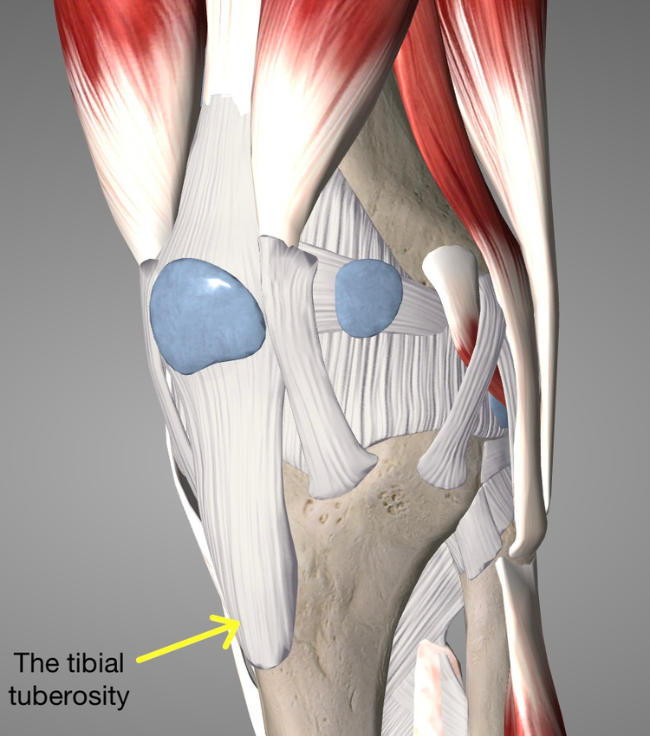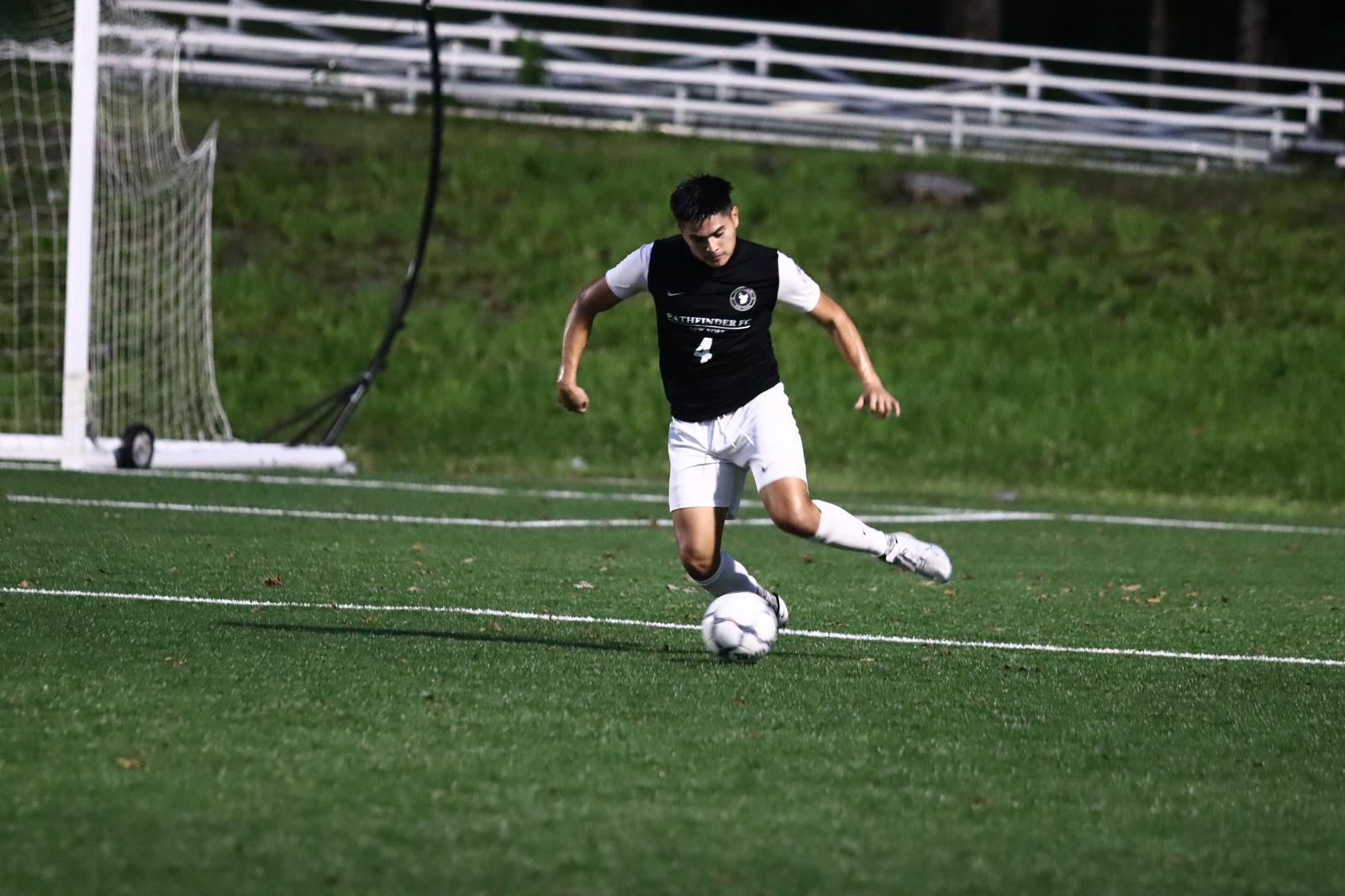STAY ON THE PITCH
Prevent & Cure Osgood Schlatters
PATHFINDER NY
What is Osgood Schlatter Disease?
To comprehend our approach to Osgood Schlatter Disease, let's first delve into the issue. In simple terms, Osgood Schlatter Disease arises when the thigh bone (femur) undergoes rapid growth, outpacing the elongation capacity of the longest quad muscle (rectus femoris). This results in the muscle forcefully pulling at its attachment site below the kneecap (the tibial tuberosity) with each step taken by the athlete.
The visual below depicts an isolated view of the femur and rectus femoris, with a closer examination of the knee. The shiny structure in the center is the prepatellar bursa, situated in front of the kneecap (the patellar). The tendon runs from the quad and descends to attach at the top of the shin bone (tibia).


Looking at this it is pretty easy to understand that a tight quad that can’t keep up with a rapidly growing femur is going to cause drama at the tibial tuberosity. It’s as though the bones are literally tearing the tendon off its attachment site at the top of the shin.
The issues are compounded by the fact that in young players the attachment site at the tibial tuberosity are not fully bonded, and stay like semi-set glue to allow for further growth. For athletic kids going through a growth spurt - weak glute muscles, poor running form, and a 48-week season on a hard surfaces - it’s not surprising we see plenty of Osgood cases.

Our Program:
- March - July
- Weekly 1-hr sessions (Tuesdays at 5 PM)
- Work with our trainers specialized in these techniques
- Monthly subscription of $200
- Join or cancel at anytime
How We Treat and Prevent OSD
Now that we've grasped the essence of Osgood Schlatters Disease—essentially a case of bones outpacing tight muscles, leading to irate developing attachment points—how can we address it effectively?If we could wield a magic wand, a temporary halt to the growth spurt would be the dream solution. However, the conventional advice of ceasing sports activities and waiting it out isn't ideal. But if we shift our perspective on Osgood Schlatters Disease, treating it as a tendon issue rather than a bone problem, we uncover the potential for a cure in just a few weeks!
Create Length in the Quad - Initially, we work on elongating the quad to accommodate the rapid bone growth and alleviate pressure on the attachment site. Unfortunately, stretching the quad can tug on the sore area, especially when you're experiencing discomfort and inflammation. This is where the magic of foam rolling for self-myofascial release comes into play.
Create Strength in the Quad - Weakness often stems from muscles reflexively inhibiting in the presence of pain. While these reflexes are useful for preventing us from attempting Herculean feats that could lead to tendon snapping, they pose challenges for athletes with knee injuries. In the case of Osgood Schlatters Disease, these reflexes mean the muscles should be absorbing kinetic energy, but instead, tendons and attachment sites bear the brunt. The good news is that we can activate these muscles almost instantly using isometric holds.
Of course, a comprehensive treatment plan extends beyond these steps to ensure athletes are equipped to prevent Osgood from returning. We focus on re-patterning exercises, shifting from a knee-dominant movement pattern to a glute-dominant one. Additionally, we implement strategies to reduce ground reaction forces and create a necessary deload for young tendons to adapt. The final piece of the puzzle involves movement skill retraining, teaching athletes to run, jump, and cut efficiently to minimize knee load, resulting in faster, pain-free athletes.
Athletes who undergo our process not only recover from Osgood Schlatters but also emerge stronger than ever, enhancing their sports performance. Crucially, we keep them actively participating in sports, sparing them from lengthy breaks during their growth spurts—a pitfall for many young athletes today.
